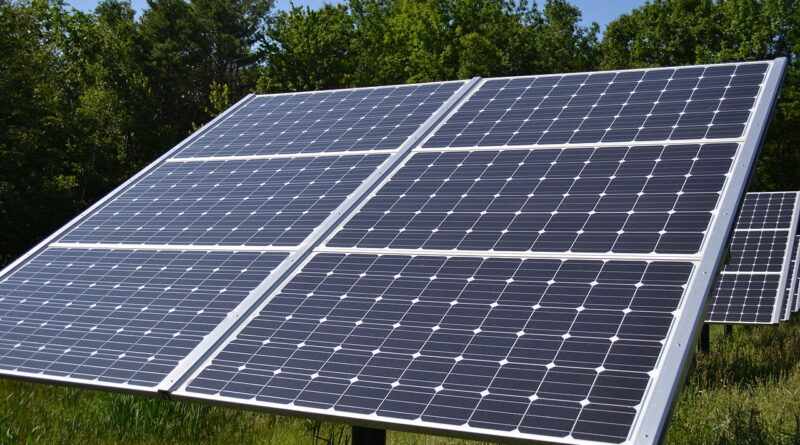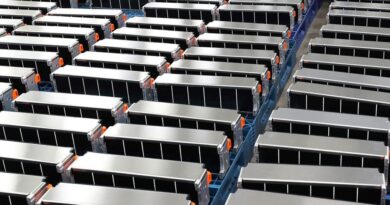Steel rising costs will hit solar construction
Prices for polysilicon and steel are rising sharply, putting upward pressure on solar costs. Utility-scale projects will be the most exposed. Steel prices have been soaring this year, driven by the global economic recovery and expectations that the US will soon commit to spending hundreds of billions of dollars on infrastructure, says Wood Mackenzie.
US steel prices hit record highs this week, with the August contract for hot-rolled coil reaching $1,878 per short ton, up from about $550 a year ago. Rising steel prices are having an impact across the economy, and the energy industry is no exception. For renewable energy in particular, rising prices for steel and other inputs such as polysilicon are interrupting the long-term decline in costs.
The price pressures have prompted some developers in the US and other major markets to consider project delays or cancellations. Higher costs are putting a brake on the growth of the renewable energy industry, at a time when the US and other countries need it to accelerate, to put them on course to achieve goals for cutting emissions.
In solar power, action by the Biden administration is adding to those input price pressures. The US government last week issued an order on solar imports containing silicon metal sourced from Xinjiang-based Hoshine Silicon Industry (Shanshan) Co, which is estimated to supply 25-35% of the Chinese polysilicon market.
The effect of that order is that any US imports, including modules, thought to contain silicon from Hoshine will be detained unless the owner can prove otherwise. The order “sends shockwaves through the industry”, Wood Mackenzie analysts commented.
Module manufacturers hoping to sell to the US may need to reconfigure their supply chains, and even if they do not use any silicon from Hoshine will have to have the paper trails to prove it. Providing that proof can be difficult, because polysilicon producers have generally used silicon indiscriminately from a range of sources.
These new US requirements come after polysilicon prices have already been rising strongly, jumping 90% in the second quarter and almost quadrupling over the past year. Some of the most recent increase appears to have been anticipating the US restrictions, but there is still likely to be further upward pressure on prices as manufacturers work to comply.
The rise in polysilicon is likely to add another 1c-2c per watt to the price of a module, which in the US averaged 32-34c per watt in the second quarter, and the paperwork required to satisfy the US authorities about sourcing will create additional costs on top of that.
Meanwhile, the rise in steel prices is driving up the cost of the tracking systems used in most utility-scale projects. More than 65% of the cost of a tracker is typically in steel. If steel prices this year end up being double 2020’s average, that could mean the cost of tracking systems rising by about 30%, although manufacturers who bought supplies before the market took off will be able to avoid some of that impact.
Modules typically represent 35-40% of the total capital cost of a US utility-scale project, with trackers a further 10-15%. Equipment manufacturers may not pass on all the input price increases they are facing. But all-in utility-scale solar system costs are still likely to increase by 5-10% on average this year, says Molly Cox, a Wood Mackenzie solar analyst.
US solar installations have been roaring ahead, rising by a remarkable 46% last year. They were expected to keep going, rising 24% to 24.4 gigawatts in 2021 and a further 10% to 26.8 GW in 2022, according to Wood Mackenzie’s most recent forecasts.
With costs rising, however, project economics face new challenges. Modules are typically bought before a project starts construction, so some of the impact of this year’s increases will spill over into 2022 and beyond. The full impact of the rise in costs is not yet clear. But there is a good chance that these forecasts for installations will soon be revised downwards.
STEEL PRICE IMPACT MODERATED IN UPSTREAM OIL AND GAS
Meanwhile, rising steel prices are also an issue for the oil and gas industry. Steel casing and tubing typically represents about 9% of the cost of an onshore well in North America, according to Nathan Nemeth, senior analyst for unconventional plays. But with activity in the upstream industry still recovering only slowly from its sharp downturn last year, the rise in steel prices over the past nine months has not yet had a noticeable impact on overall costs.
Fuel and chemicals prices have also been rising along with steel, Nemeth says, but other well costs have remained subdued, with utilisation for rigs and pressure pumping still below pre-pandemic levels. There were 470 oil and gas rigs active in the US last week, according to Baker Hughes. That is almost double the number at the lowest point last August, but well below the 796 that were active at the start of 2020.
That pattern of cost increases means inflation can vary widely from location to location. Wells that need additional casing strings and power from diesel generators have been subject to greater cost inflation. On average, though, drilling and completion costs for wells in the US Lower 48 states in the second quarter were still 5% below pre-pandemic levels, and only a modest increase of 3% is expected for the year as a whole.
Cost pressures from steel may start to fade. PowerAdvocate, Wood Mackenzie’s sister company that collects and analyses cost and pricing data, argues that steel is now “unsustainably high”, and that prices are likely to drop back for the remainder of the year.



